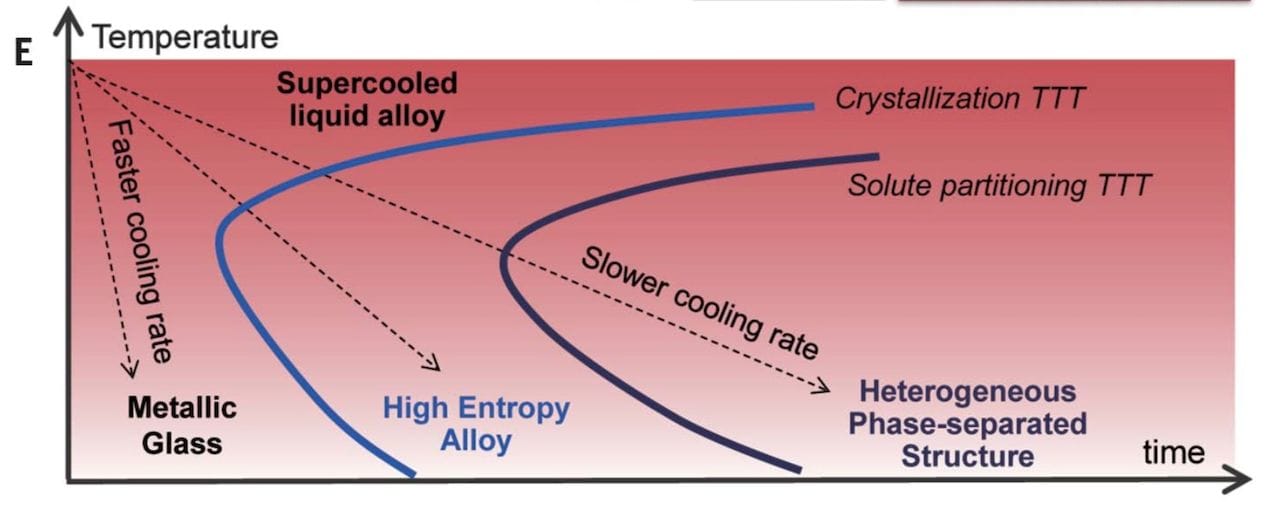
I’m reading a paper that describes a new method of creating previously impossible metal alloys.
The new method allows for the creation of what is called “high entropy alloy nanoparticles”, which can apparently combine up to eight immiscible elements. (Immiscible means not forming a homogeneous mixture when added together, like oil and water.)
The process involves precise temperature control during mixing:
by thermally shocking precursor metal salt mixtures loaded onto carbon supports [temperature ~2000 kelvin (K), 55-millisecond duration, rate of ~105 K per second].
Further, it seems that this technique could be used on a very wide variety of materials:
We synthesized a wide range of multicomponent nanoparticles with a desired chemistry (composition), size, and phase (solid solution, phase-separated) by controlling the carbothermal shock (CTS) parameters (substrate, temperature, shock duration, and heating/cooling rate). To prove utility, we synthesized quinary HEA-NPs as ammonia oxidation catalysts with ~100% conversion and >99% nitrogen oxide selectivity over prolonged operations.

While they do not mention the possibility, it seems to me that this could be of immense interest to the 3D printing world, which, as readers know, has a highly constrained set of usable materials, particularly in 3D metal printing. There are only a dozen or so commonly used metal powders today.
But if this new research proves commercially viable, it may be that the metal powder manufacturers may have a new source for the production of their materials. In fact, it may be that they can choose or even design the material using this process.
What gets me even more excited is that it might be possible to combine these new unusual alloys with the metamaterial concept. Metamaterials are carefully designed structures that at a macro scale exhibit engineering properties different from the raw material itself.
Now imagine a 3D metal printing system with the ability to create objects not only with previously unobtainable materials, but also leveraging them into impossible objects through metamaterials.
With this development and the many others recently made or yet to come in materials science, we will inevitably see incredible parts being produced for astonishing machines.
Via Science Direct

